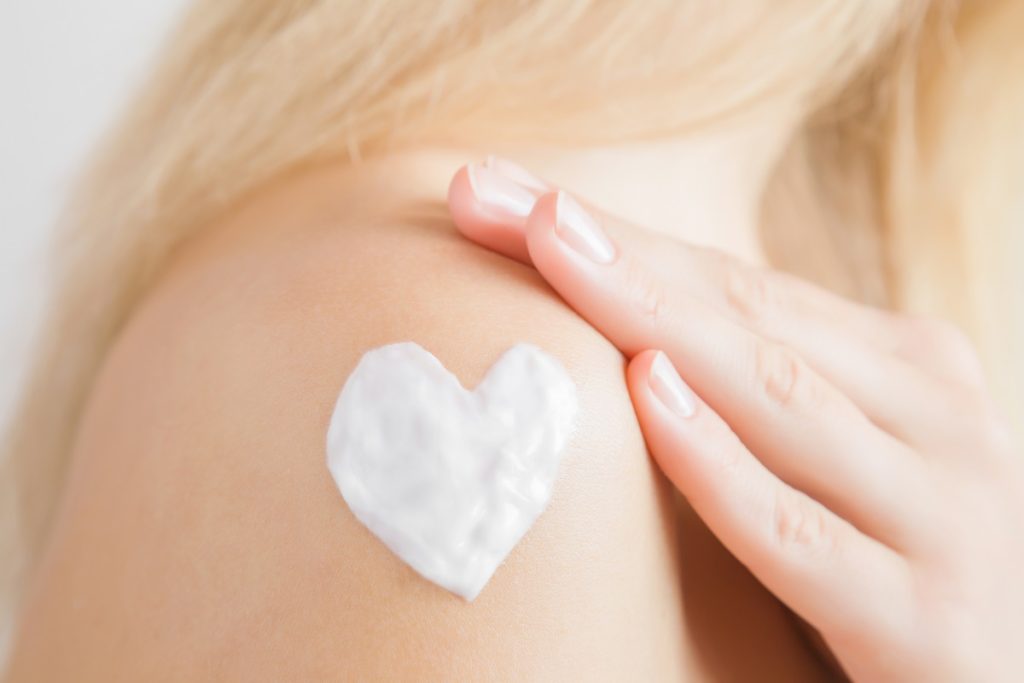- Scleroderma is an autoimmune disease that views the body as a foreign party and increases collagen production.
- There are two types of scleroderma: localized and systemic scleroderma.
- The first symptoms of scleroderma include thickening or hardening and shiny patches on the skin.
- Unfortunately, a scleroderma cure is not available, but there are recommended scleroderma self-care methods to implement in daily life and improve the condition.
- Neglecting scleroderma allows the disease to spread and affect internal organs and risk of kidney and heart failure.
Scleroderma is a chronic autoimmune disease of the skin and joints. To put it simply, the body’s immune system assumes skin and joints as foreign bodies that produce too much collagen and result in thick skin. It’s a common disease that affects approximately 300,000 US citizens.
People affected by this condition experience continuous challenges with the body’s normal function. They need to establish scleroderma self-care to live a healthy and fulfilling life.
This article will discuss crucial Sjogren’s syndrome self-care tips and offer advice on daily routines for scleroderma.
What Do You Mean by Scleroderma?
Scleroderma is an autoimmune disease, also known as systemic sclerosis. It affects collagen production by causing overproduction. Collagen is the protein that helps our skin stretch, but if present in big dosages, it causes the skin to thicken and eventually harden significantly.
Localized scleroderma affects only the skin, while systemic scleroderma affects the skin, internal organs and blood vessels, exposing the person to bigger health perils. The worst part about scleroderma is that it’s not curable, but it is treatable.
Many scleroderma self-care rituals can help ease the symptoms. Establishing a good scleroderma self-care routine not only improves the quality of life but it helps you to slow the disease’s progression.
Scleroderma Causes and Symptoms
What are the first signs of scleroderma?
One of the first symptoms of scleroderma is noticing thicker skin somewhere on the body. During an examination, a doctor will use a scleroderma pinch test by picking the thick skin to assess the severity. They will give a score between 0 and 3 to identify the severity. They will also run many other diagnostic tests to ensure it’s scleroderma.
Some of the signs and symptoms of scleroderma you might experience are the following:
- White or pale fingertips
- Shiny and dark skin
- Pain in the joints with possible swelling
- Numbness and tingling in the hands
- Difficulty in moving the joints
- Low calcium
- Sore on joints
These are initial scleroderma signs and symptoms, but you can expect further complications if you neglect to acknowledge them. You can expect kidney or heart failure due to the affected blood vessels. That’s why understanding scleroderma to the core is of utmost importance.
Understanding Scleroderma Management
Currently, there is no cure that can effectively eradicate this autoimmune disease from your system. Your body sees your skin as the enemy. However, there is a treatment that allows the person to lead an eased life and makes the disease more tolerable.
Neglecting and leaving scleroderma untreated allows it to expand and create further complications. More specifically, the low blood flow creates tissue damage and kidney failure. To avoid this, establish a self-care routine and stick to it. It’s not expensive and is more about changing and replacing bad lifestyle habits with healthy ones.
10 Effective Self-Care Tips For Scleroderma
Use the best scleroderma self-care tips and routines to deal with scleroderma, which you can start as soon as you notice the first symptoms of scleroderma.
Hydration and Skin Care

Lack of circulation induced by the autoimmune disease causes thick skin and ulcers. Winter months can be worse because the skin dries significantly, which can cause irritation or pain. Applying moisturizer will soothe the infected area and reduce the irritation. Doctors also suggest keeping your skin hydrated by regularly taking mild showers, not hot, and using a moisturizer.
Always use natural organic products to avoid inflammation and further complications. The best lotion for scleroderma is the plainest, with no harsh chemicals whatsoever.
Gentle Exercise and Stretching
Doctors suggest regular practice and stretching because the disease also affects the joints and other internal organs. Staying active increases blood circulation, prevents the disease from clenching your joints, and keeps you mobile. If you avoid exercising, you risk further development of the disease and pushing yourself to paralysis or invalidity.
Balancing Rest and Activity
Balance rest and activity to avoid feeling fatigued. However, scleroderma fatigue should not be mistaken for normal fatigue. People with scleroderma do not feel tired but are more like disabled. It may affect the internal organs, such as the lungs, and cause shortness of breath and other issues hindering energy.
Establish a healthy sleeping schedule, remain active and avoid over-practicing. Taking regular breaks is the key habit to avoid feeling fatigued.
Protecting Skin from Sun Exposure
Summer sun rays harm everyone, regardless of whether they have skin disease or not. The UV/UB rays dehydrate the skin if not protected with sunscreen.
People with scleroderma should never leave their houses without SPF, especially during summer. They need to make all efforts to keep their skin moisturized to avoid irritation of the affected area from direct exposure to the sun.
Nutrition and Balanced Diet
The University of Michigan Health explains that those living with scleroderma are prone to digestive issues that lead to malnutrition, fatigue, and low reception of nutrients. Establish healthy diets and optimize meals as follows:
- Consume more antioxidant herbs like cinnamon, ginger, rosemary, basil, turmeric, etc.
- Cut down on added sugars and get the necessary glucose from milk, fruits, honey, agave nectar, syrup, or other natural sweet products.
- Consume fresh groceries and avoid using canned fruits or anything with additives.
- Drink fresh water. You should keep yourself hydrated all the time and take your 1.5-2 l daily water intake.
- Consult the doctor to prescribe the necessary vitamins and scleroderma supplements to ease your condition.
The scleroderma diet cure is eating 3-4 times a day to keep your body hydrated and well-fed to trick your immune system.
Stress Management and Relaxation Techniques

Stress severely affects scleroderma and may cause heart palpitations or stomach issues. It can also induce Raynaud’s phenomenon flare-up by experiencing cold temperature, anxiety and sweating resulting from temporal spasms of the blood vessels. Experiencing stress in your daily life may even cause new symptoms and worsen the situation overall.
Therefore, we suggest establishing a healthier stress management mechanism to keep your system’s stress level minimal. Some techniques you can try include:
- Avoiding stressful situations
- Do not endure hardships
- Take frequent breaks
- Practice meditation
- Wear comfortable clothes
- Practice anything that keeps you comfy and in a good mood
Joint Protection
Joint pain is among the first symptoms of scleroderma, but neglecting or not protecting the joints may lead to arthritis. One of the most effective ways to reduce the swelling in the joints is to apply cold coverage to induce blood flow. Avoid lifting heavy things to prevent the occurrence of swelling, and stretch your arms and hands regularly and as often as needed. This ensures they remain mobile and agile.
Medication and Treatment Adherence
People suffering from scleroderma should constantly monitor their condition. Regular doctor appointments are necessary to prevent the worsening of the condition.
Additionally, doctors may put you on a specific medical plan that best treats your conditions. To see improvements, stick to the plan and listen to your doctor’s instructions.
Regular Medical Check-ups

Patients are entitled to regular annual medical check-ups to monitor scleroderma’s progress and make adjustments in the therapy. To ensure that the disease is under control and that it is not affecting your daily life, doctors will regularly perform the following tests:
- Pulmonary function
- Kidney function
- Pain assessment
- Cardiac function
- Blood Pressure
- CT chest scan
- Electrocardiogram
Support and Community
Living with this autoimmune disease is difficult, and people with the condition will have their moments. It is entirely normal for them to act without reason, complain or be depressed.
Acknowledging the difficulty and struggles of scleroderma is vital. Those living with scleroderma should not turn their negative emotions into a lifestyle but take a break, a moment, or a deep breath and try harder the next time. The more they practice this, the better.
If a loved one suffers from scleroderma, expect negative behaviors with or without reason, and always be there to offer help and support. There are many centers and communities for people suffering from scleroderma where they share their daily struggles. These communities also help with loneliness.
Incorporating Selfcare into Daily Routine
Following the suggested 10 scleroderma self-care tips will help you live an easier and more fulfilling life. However, these practices need to become part of their daily routine. Scleroderma is a disease that requires daily and continuous treatment to be controlled and prevent further spreading across the body or affecting other organs. It may not always be easy, but pushing through will become a habit and, thus, a lifestyle. You will start viewing all the benefits that come from the implementation.
The Positive Impact of Selfcare
Adopting a new lifestyle and self-care practice allows you to control the disease instead of letting the disease control you. This means not feeling fatigued, skinny, or lifeless. The benefits of self-care also continue on an emotional and mental level. The necessary nutrients allow the brain to function properly, and in turn, you will feel more satisfied and happy compared to the time before you implemented the self-care tips.
Scleroderma patients often share that implementing healthier habits and acknowledging the truth helps them fight depression and allows independence. A major part of the fight includes their loved ones and the meetings with people suffering from scleroderma. Therefore, do not hesitate to ask for help and support because you are loved and not alone in the fight.
Conclusion
Scleroderma cure doesn’t exist, but you should certainly try scleroderma self-care treatments.
Mind that neglecting your scleroderma may worsen the condition, allow the disease to spread and affect internal organs, and even cause severe issues such as heart or kidney failure. Therefore, implementing healthier lifestyle habits adjusted to scleroderma prevents further complications and allows you to live a more fulfilling and eased life.
Learning the main causes and symptoms of autoimmune scleroderma can help you to treat and control the disease.

